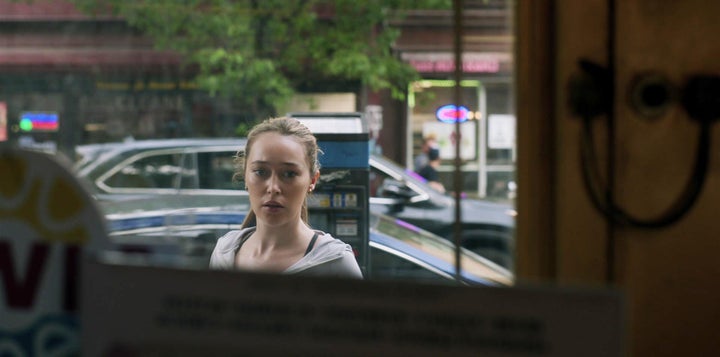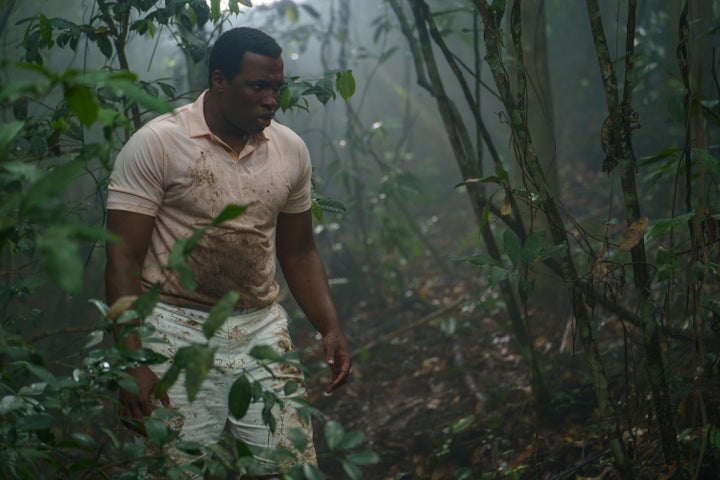It’s a widely known incontrovertible fact that murdered white women and girls get much more consideration and respect than, nicely, actually any marginalized one that is brutalized. That fact is supposed to be an undercurrent all through “Saint X,” the brand new Hulu sequence that untangles what led to a — you guessed it — white faculty pupil’s dying whereas on trip along with her household within the Caribbean.
However that hardly makes any affect when the present fails to discover something round that matter in a compelling method — mainly, the roles of race, class and privilege. What it does do efficiently, nevertheless, is make a hardly ever fascinating, multiple-timelined whodunit that presents the younger lady’s magnificence and intercourse enchantment as so beguiling that there are a number of suspects within the case.
It’s a clumsy, simplistic interpretation baked inside a premise that’s in any other case promising. In truth, Alexis Schaitkin’s novel of the identical title upon which the sequence relies (printed simply months earlier than 2020’s supposed cultural reckoning) was hailed for its “acute” racial and social commentary.
So, what occurred when it got here to adapting it for tv? The reply to that’s nearly as irritating because the plot. A number of episodes are directed by the nice Dee Rees, and the sequence boasts a bevy of largely feminine writers — together with a minimum of one in every of shade — who’ve dealt with difficult storytelling prior to now together with on “The Sinner” and “The Handmaid’s Story.”
However “Saint X” isn’t almost as sensible or resonant as both of these exhibits, even at their worst. A lot of that’s on account of the way in which the 2 central protagonists are drawn. The story opens 18 years in the past when Alison (West Duchovny — daughter of Téa Leoni and David Duchovny) is on a stunning island getaway with, begrudgingly, her mother and father and little sister.
Begrudgingly as a result of Alison feels that her white, cultureless mother and pa, Mia and Invoice (Betsy Brandt and Michael Park), and awkward youthful sibling are severely cramping her type. As a result of, as “Saint X” incessantly factors out, Alison is the progressive, Toni Morrison-reading educational — and her household just isn’t.
However neither is Alison, actually. Whereas she by no means fails to chide her mother and father for being the standard white of us who come to a lovely island to luxuriate and present little curiosity in its Black and brown cultures, Alison seeks out the native late night time events and the locals themselves for a threesome.
When Mia questions a few of her daughter’s apparent contradictions, Alison’s solely response is that she a minimum of needs to study and is “attempting.”
It’s an exasperating, although sensible, portrayal of conflicting white liberalism that’s so pervasive — and simply as clumsily dealt with as it’s on “The White Lotus.” Exchanges like this go unchecked, simply withering away into the nice and cozy breeze and throughout the seaside, partly as a result of most of the central characters are simply as white and clueless.
But additionally, the Black characters (extra on them in a bit) appear both to shrug it off or be detached about it, even when they’re out of sight from their rich, white guests and capable of converse freely. A better sequence would have proven the truth of these intimate interactions. “Saint X” doesn’t appear .
Then, amid Alison’s exhaustive efforts to show to everybody round her that she’s a very good individual and do extra of studying, she dies underneath mysterious circumstances. And in true, terrible-headline trend, “Saint X” positions her dying as Stunning and Beloved Younger White Lady Dies After Becoming a member of Two Black Locals For a Enjoyable Evening Out.
That isn’t based mostly on any astute exposition or commentary the sequence’ writers discover on the present, although. Numerous that comes from Duchovny’s flighty efficiency, presumably partly based mostly on the path, and the narrative itself. And the 2 younger Black males who’re accused of her dying grow to be one other sort of casualty within the courtroom of (racist) public opinion.

Alison is persistently introduced because the breezy, blond, fairly younger lady who parades her magnificence round, a lot to the evident dismay of different attractive singles and married males whom she passes over for 2 resort staff (Jayden Elijah and Josh Bonzie).
It doesn’t make Alison an particularly sympathetic sufferer, which is ok as a result of not each sufferer is and must be. You usually get the sensation whereas watching “Saint X” that any explicit factor means one thing, that the sequence is attempting to level to one thing. But it surely doesn’t, and it isn’t. It depends far too closely on regardless of the viewers brings to it, with out being about something in any respect.
Including to that frustration is the present-day storyline, through which Alison’s sister Emily (Alycia Debnam-Carey), now all grown up and dwelling along with her white boyfriend in a Caribbean space of the Bedford–Stuyvesant neighborhood of Brooklyn, is decided to, supposedly, discover out what occurred to Alison.
However she tries to do that by covertly befriending fellow Mattress-Stuy resident Clive aka Gogo (Bonzie), now lengthy gone from his Caribbean dwelling and who doesn’t acknowledge the grownup Emily, for causes “Saint X” by no means adequately explains. Is it to attempt to coerce an admission or get extra intel on him?
A distraught Emily wanting closure in her sister’s case is smart. Her feeling some guilt about her personal negligence, despite the fact that she was a younger little one, makes some sense. However deliberately transferring from her white neighborhood and her completely bereaved mother and father to this one appears one way or the other conniving as a result of the sequence doesn’t know what to do with that.
Proper round this level, usually abandoning a extra fleshed-out grownup Emily, is when “Saint X” tries to, ineptly, stability the story by increasing the narratives of the Black characters who get all however tossed away. The present takes us again to their perspective 18 years prior, providing some wealthy element about their hopes and goals away from the resort on which they labored.

However a lot of it doesn’t appear notably helpful, past humanizing the characters in order that they’re not simply the pawn in a narrative heightened solely by the personification and centralization of white privilege. It’s as if to say: These Black individuals even have lives.
Are they fascinating? Not notably. What would make them fascinating is how they match into the themes of the present. However what continues to push towards that mode of pondering is that the present appears to have washed away any themes the supply materials could have had, making these extraneous plotlines simply that. With out a level, it simply looks like characterizations and little else.
Gogo is essentially the most distinguished Black character. Bonzie infuses him with each an accessible heat prior to now and a brokenness once we meet him once more years later within the sequence after a lot injury. We study the reality about his friendship with Edwin (Elijah), revealed over the course of a number of episodes.
There’s a compassion that seeps into the dialogue in the case of Gogo, Edwin and their circles that isn’t prolonged to Alison, Emily and their household, who all come off as one-dimensional or outright inexplicable. What’s so wanted right here, particularly after the way in which Alison, et al., have been arrange, are intimate exchanges that offset or complement what we noticed from the white characters.
How did they really feel about these guests? How did they really feel about their serviceable roles of their lives? Edwin, particularly, will get very shut with Alison and harbors his personal inner conflicts, however “Saint X” doesn’t trouble with any of it. His story ends with a kerplunk, undercutting any potential the present arrange, full with a revelation that by no means feels proper as a twist.
However then there’s the homicide thriller on the middle of the entire sequence, which turns into the only real cause to observe every of the eight episodes. What occurred to Alison? Did Gogo and Edwin have something to do with it? When you get to the tip of this hole story, you’ll be upset that you simply even requested these questions.


